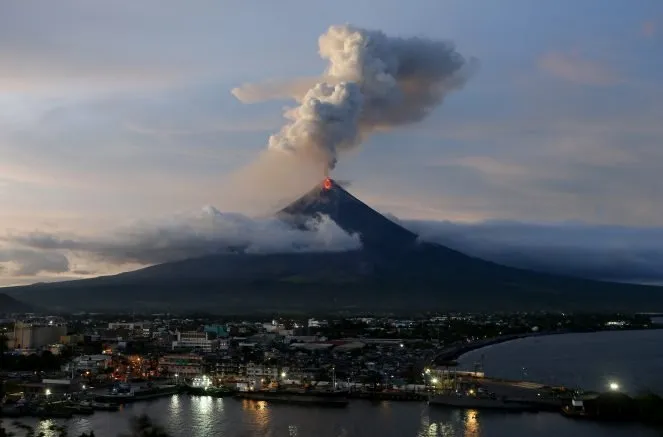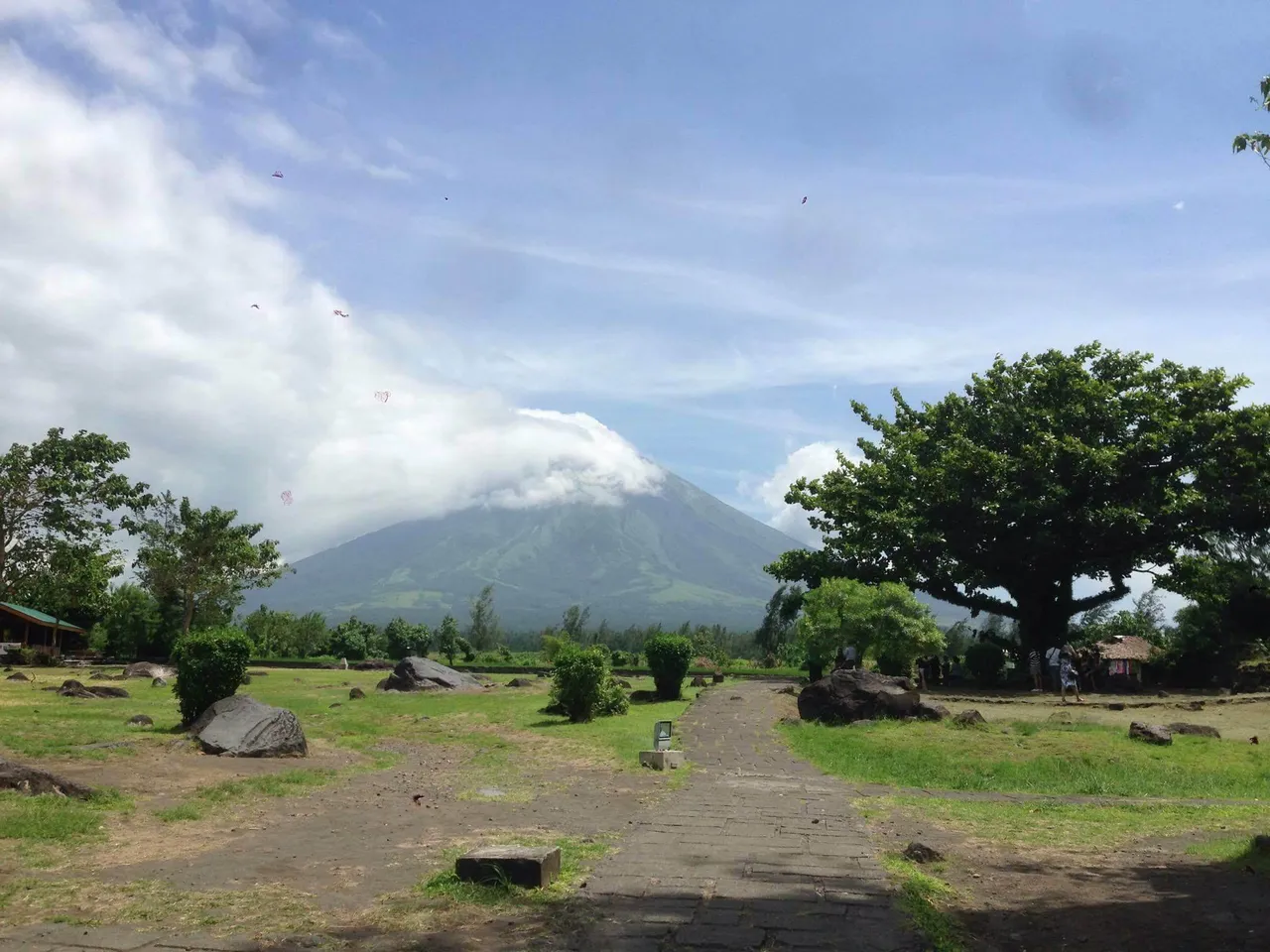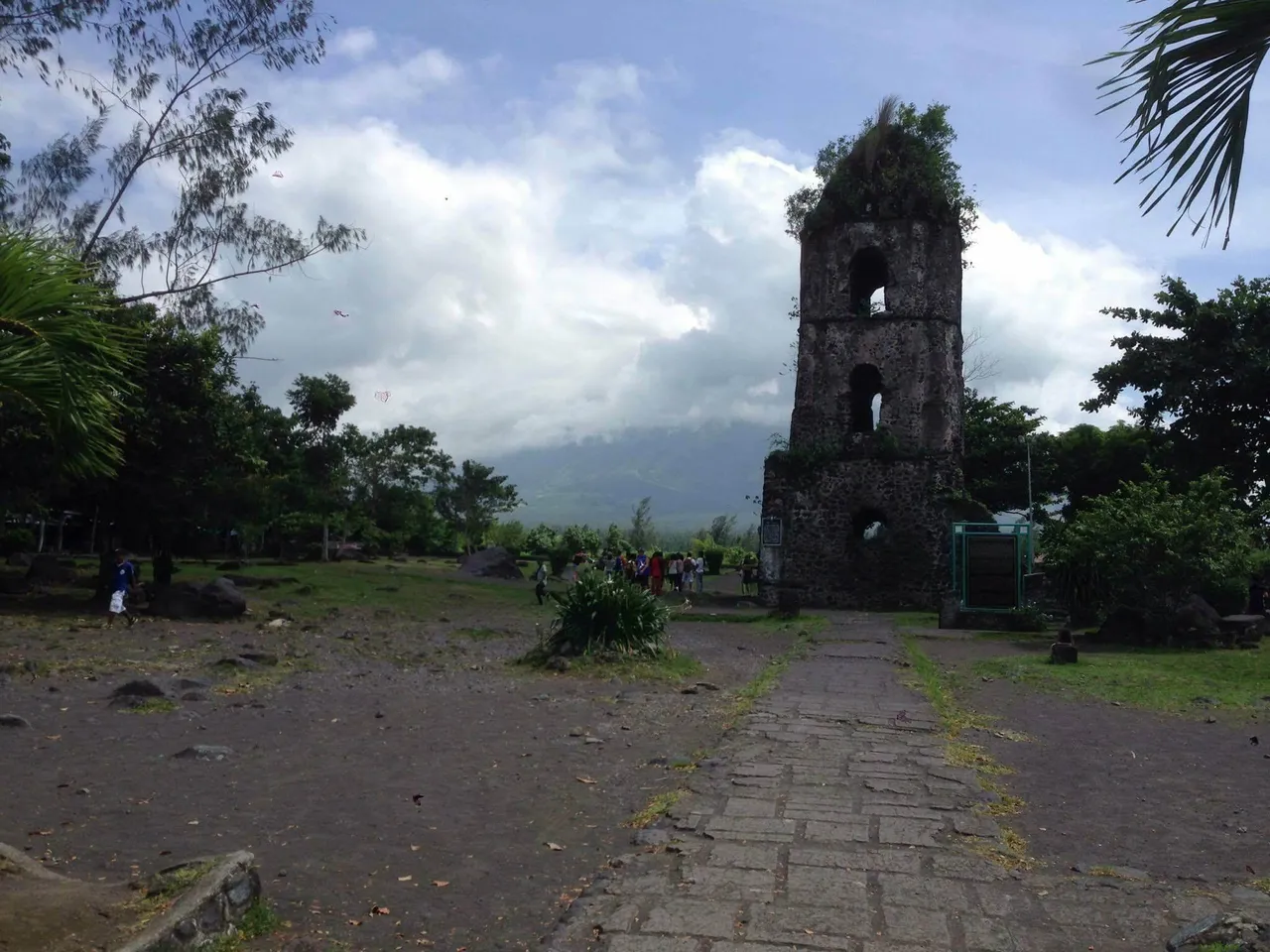Hello everyone! This is just another good to know article from me, the @newkidintown.


Photo Taken by the LGV20 on September 1, 2017

Meet the Mayon Volcano

But as beautiful as it is, it does have its fair share of tantrums. In this case, the Mayon's temper is not really something we can call fair share as it is not called active for nothing.
Active Lifestyle
Talk about being the most active volcano in the country, Mayon is stated to have erupted at least 50 times over the course of 500 years. In the year 2000s alone, Mayon had already erupted 6 times considering both minor and major explosions. More than that, the eruption of Mount Mayon has claimed plenty of lives, both during and after an eruption.

Photo Taken by the LGV20 on September 1, 2017
One of the more famous sites to visit in Bicol, which my husband went to when he had the chance, was a visit to the Cagsawa Church Ruins. Located in the municipality of Daraga, the Cagsawa fell ruin from Mount Mayon's eruption on the year 1814, leaving only the bell tower as the last remaining structure. Though as you walk through the grounds of the Cagsawa Ruins, you would notice the strange pathways you will be following. That, I believe, is already the roof of, what was then, the Cagsawa church.

The latest one happened on 13th of January 2018, 13 days before this post was made. Even up to now, it is not finished yet, as ashes and lava fountains continue to happen as well as the firebombs and rockfalls could be heard.
Lahar
While we are on the subject of eruption and how it threatens the civilians in the nearby areas of Legazpi, Daraga, Camalig, Guinobata, Tabaco and Sto. Domingo, one other threat looms which usually happens right after an eruption.

A lahar is a form of a mudslide, triggered most often by a volcanic eruption, which flows down the mountain. They are also called “debris avalanches.” As the lahar travels down the mountain, other debris such as rocks, logs, and trees become part of the fast moving mudslide. Source
Being part of the so-called "Typhoon Belt" of the Philippines, the Bicol Regions often has a regular visit from the typhoons that originates in the Pacific Ocean. These typhoons bring about rain which can help initiate the Lahar to flow down bringing havoc to the Bicolanos.
Finish Line
Viewing the Mayon Volcano through a photograph truly does not do it any justice. And if I were to have a chance and join my husband in having an adventure to the Bicol Regions, this is definitely a sight I would like to see, in all its glory. But one thing's for sure is that the photos I am seeing from Mount Mayon now, as it exploded, truly reflects how devastating beauty can be. Literally, devastating when you can see the chaotic fountains of lava, or the ashen smoke resulting from the eruption of the volcano. Truly something to be afraid of but definitely something very mesmerizing to gaze at. A sight I dream to see one day (in a safe place of course).

One last thing before I wrap things up. Just a Fun Fact.
We have seen and digested both the magnificence and deadliness of Mount Mayon. But did you know that the Mayon Volcano was derived for the Bicolano term, Daragang Magayon?
"Daragang Magayon" means Beautiful Lady in the Bicolano tongue, something that is truly reciprocated with its beautiful symmetrical cone shape. Nevertheless, you would not want to make this Beautiful Lady angry, as she can literally become a fire-breathing dragon once provoked.
Check to the legend of Mt. Mayon with Daragang Magayon as the Heroine right HERE
That is definitely a wrap, please FOLLOW me, as I am planning to do more good to know stuff from the Philippines.
Support me by hitting that UPVOTE button and RESTEEM this post as well!
Check out my previous Good to Know Articles:
• Good to Know: SINULOG - One Beat, One Dance, One Vision
• Good to Know: Habal-Habal, The Two Wheeled Taxi
• Good to Know: Jeepney, The Colorful Kings
• Good to Know: Balut! A Bizarre Gastronomic Experience
• Good to Know: Apo Whang-Od - The Living Legend
• Good to Know: Lanzones (Lansium parasiticum), The Golden Bunch!
• Good to Know: The Philippine Tarsier (Carlito Syrichta)
• Good to Know: Tamilok (Teredo Navalis), A Philippine Delicacy
See you guys on the next Good to Know...